Anna's Adventures: Brewing beer on a 40°C day!
/Anna rolls up her shirt sleeves and puts her beer goggles on in this month’s adventure.
Published in PRIMOLife Magazine October 2015
Read the whole magazine online for free at Issuu.com
It’s more than 40°C inside without a hit of a breeze, and I’m standing over a cauldron of bubbling broth, wrestling with what looks like a giant, hot tea-bag. Sweat pours off me as I press and squeeze the precious juices out of the sopping, heavy mass, labouring to get every last drop. My arms tremble with the fatigue. I need a beer.
And I’ll have to wait another eight weeks to get it.
Brewing your own beer certainly isn’t the simplest or fastest way to quench a thirst, but there is something undeniably satisfying about the process.
People have been brewing their own beer for thousands of years, but with the rise in popularity of craft beers in the last decade or so, more and more recreational drinkers have become interested in the game. That’s where brew-on-premise-breweries come in: helping novices create their own beers, while learning the tricks of the trade with plenty of guidance and supervision.
So what’s the attraction? I ask Mike Gilmore, head brewer of Brew Unique, a Parisian micro-brewery that offers half-day courses in beer making.
“It’s a movement” he explains. “It’s part of the whole concept of consuming less, and consuming better”.
What he doesn’t mention is the large novelty factor and the desire to try something new, which is exactly why I have signed up for an afternoon of malty fun.
“What shall we brew?” Mike asks cheerfully as my friends and I deposit our bags and pick out colour-coordinated aprons. There are eight of us brewing today, with two people per station. My boyfriend and I have chosen to make a simple Pale. Mike pulls out a blank brew ‘recipe’, which he can quickly modify according to our tastes.
“A Pale, ok”.
He scribbles names and amounts of grains on the top of the sheet.
“What about the hops?” he asks.
“Yes! Hops. Very good”. I say.
“Ok, Sorachi Ace it is, and a little bit of Irish Moss”.
He writes this down while I nod, pretending to know what he’s talking about.
“How strong do you want it to be?”
“… The normal amount”
More scribbles, and we have our recipe. There are terms I don’t recognize, and lots of different temperatures and times. It’s a good thing Mike’s gonna guide us through it, or I might end up with whiskey instead.
Down in the basement, we shuffle white plastic barrels of malt around, searching for barley grains that correspond to our recipe, then weigh them out into the tub.
Our pale calls for a pretty simple mix of 5.5kg “Vienna” malt and 200g of “Cara Hell”. My friend Bianca, set on brewing a Porter is racing back and forth between barrels of exotic sounding grains, mostly dark chocolate coloured. In a lightbulb moment, I realise that the colour of the malt corresponds directly to the colour of the beer.
We mill our pale coloured grains with a funnel and a power tool, and carry the lot upstairs.
At our stations, we bring 19L of water to 71°C in a huge metal pot. We will be doing “brew in a bag” style brewing today, a technique that was developed in Australia and has gained a lot of success as a home brew method due to its simplicity. Using only one pot, it doesn’t require much equipment and is relatively fast and easy.
We scoop the malt into a fine mesh bag, and dunk it in the hot water. Delicious smells begin to waft around the room, and confusingly, my stomach grumbles.
“Basically, its porridge” Mike chimes in.
After it’s been cooking away for about 45 minutes, we have to do the teabag wrestling part. This muscle-building process is called ‘sparging’, rinsing the mash out to get the most possible liquid, or ‘wort’ which will eventually become the beer we drink.
Now the famous hops make their appearance. Little pellets of what look like rabbit food, they turn out to be the dried flower of a plant which gives the beer aroma, flavor and bitterness. We gently fold them into the boiling wort, and my mind begins to wander. I’m cross-between a mad scientist and a witch standing over her bubbling cauldron, cackling and muttering incantations into the sludgy potion… “flame it out, bubble the malt, sparge the barley and hops the wort!”
“Don’t stir in a whirlpool! It will make a volcanic eruption!” Mike walks past with a warning, bringing me back to reality.
Once the wort is cooled, we transfer it into the sterilized barrels in which it will ferment for the next six weeks. A bit of rehydrated yeast is added, and hop! The lids are sealed.
A few weeks later we return to add sugar to start the carbonation process, and tap them into 36 tall brown 500mL bottles that clink happily as we carry them out of the shop. And yet we still have to wait two more weeks before we can drink them!
If you need me in the meantime, I’ll be down at the pub.
Cheers!

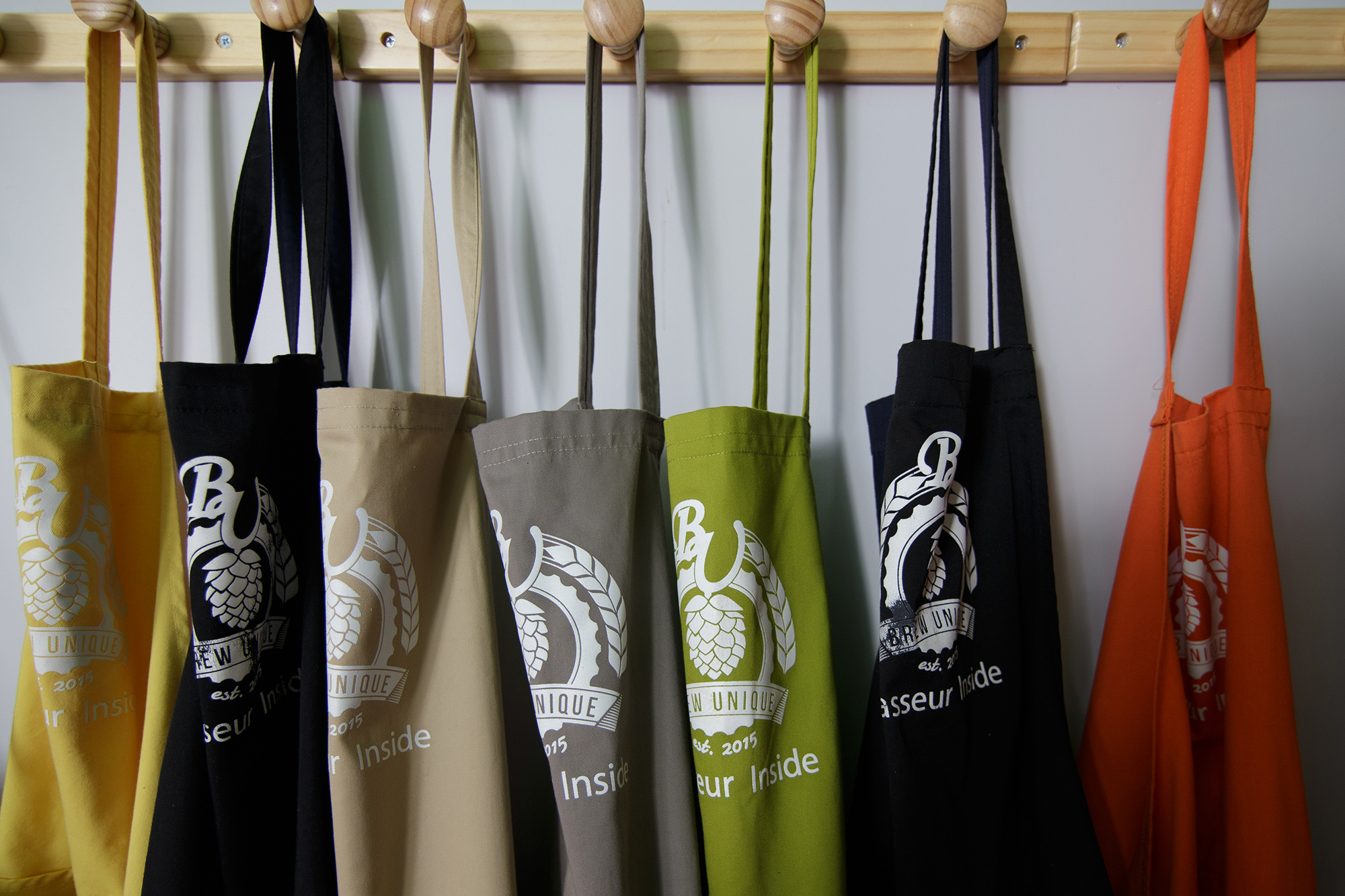
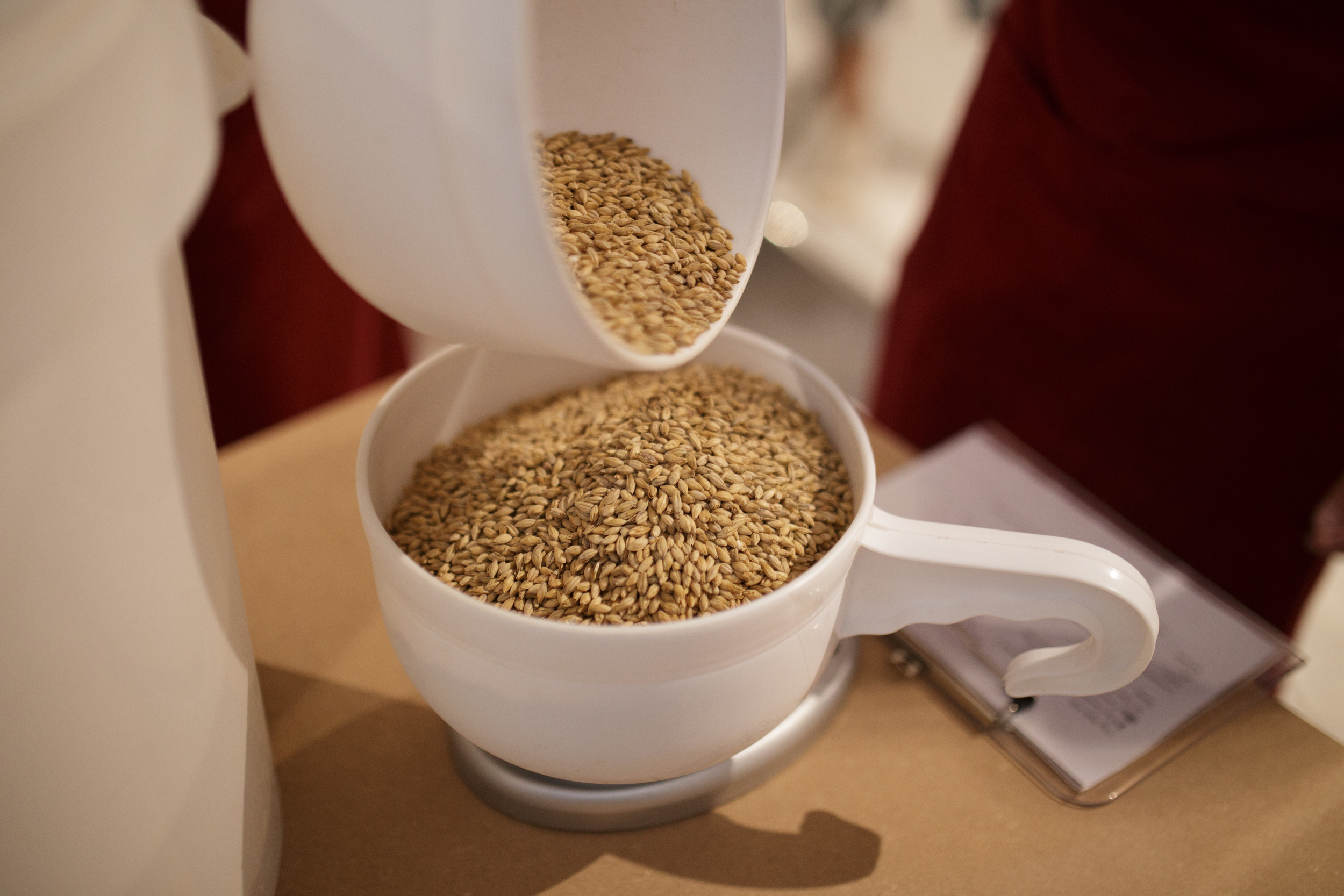

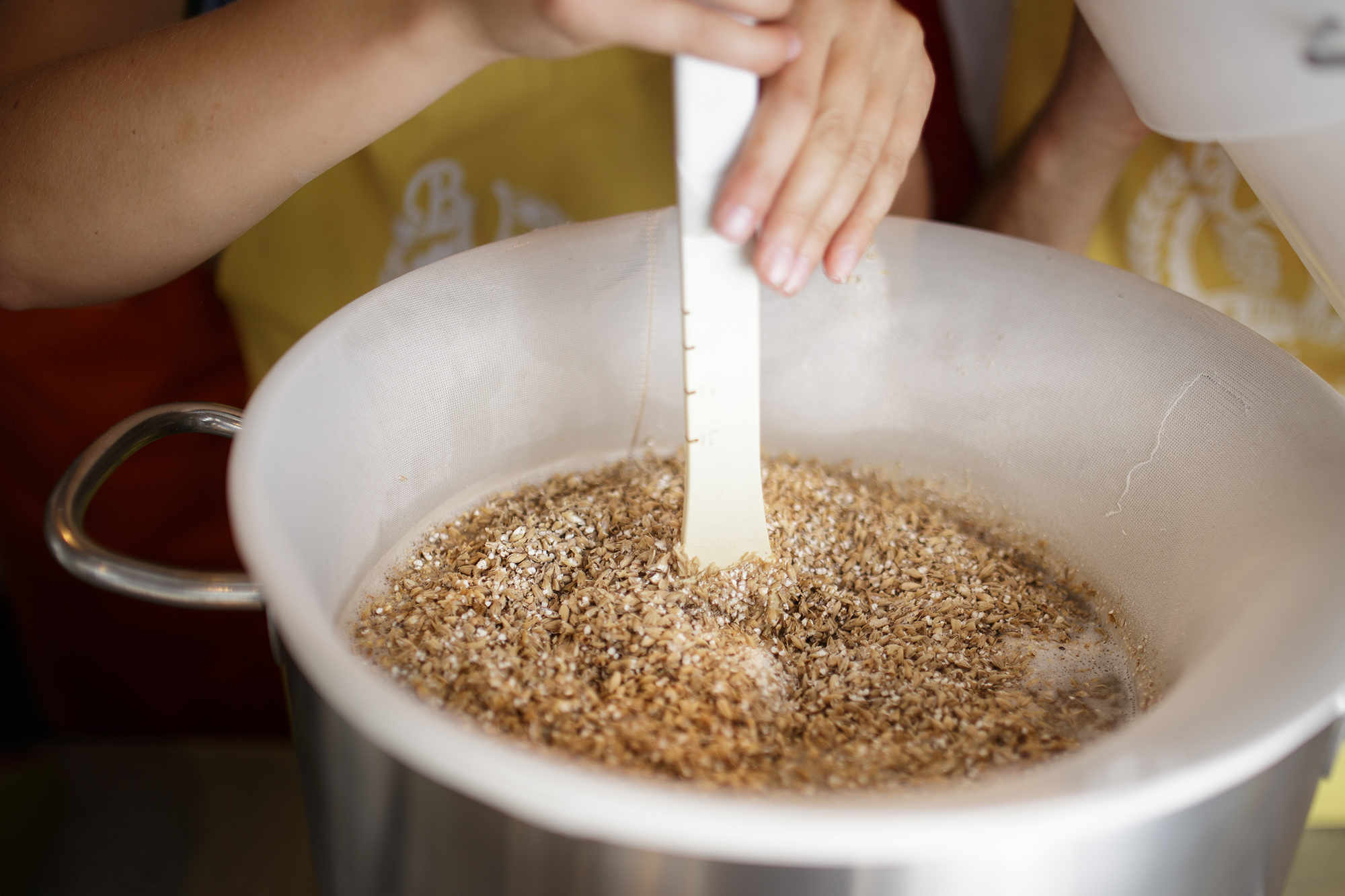
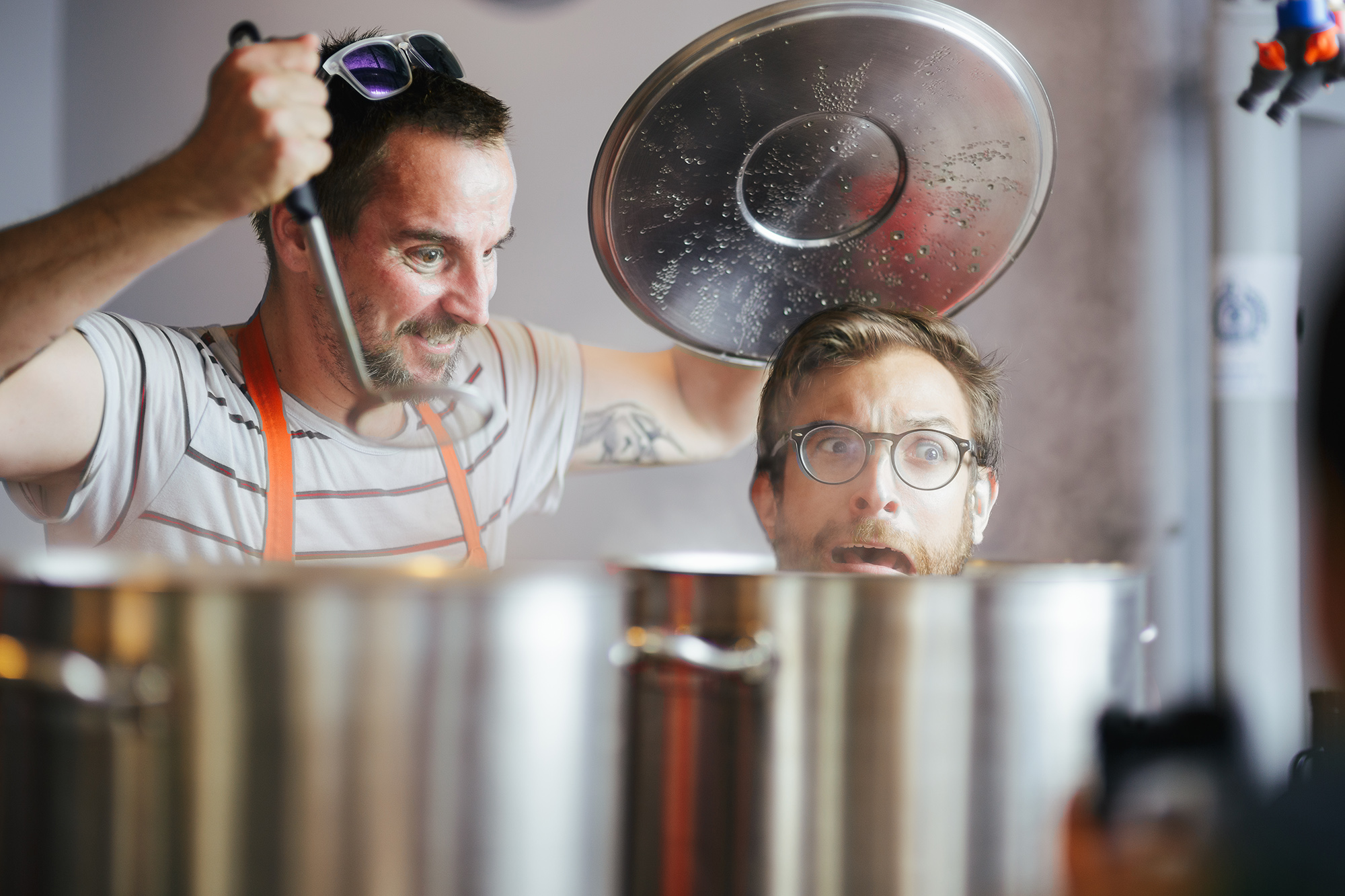
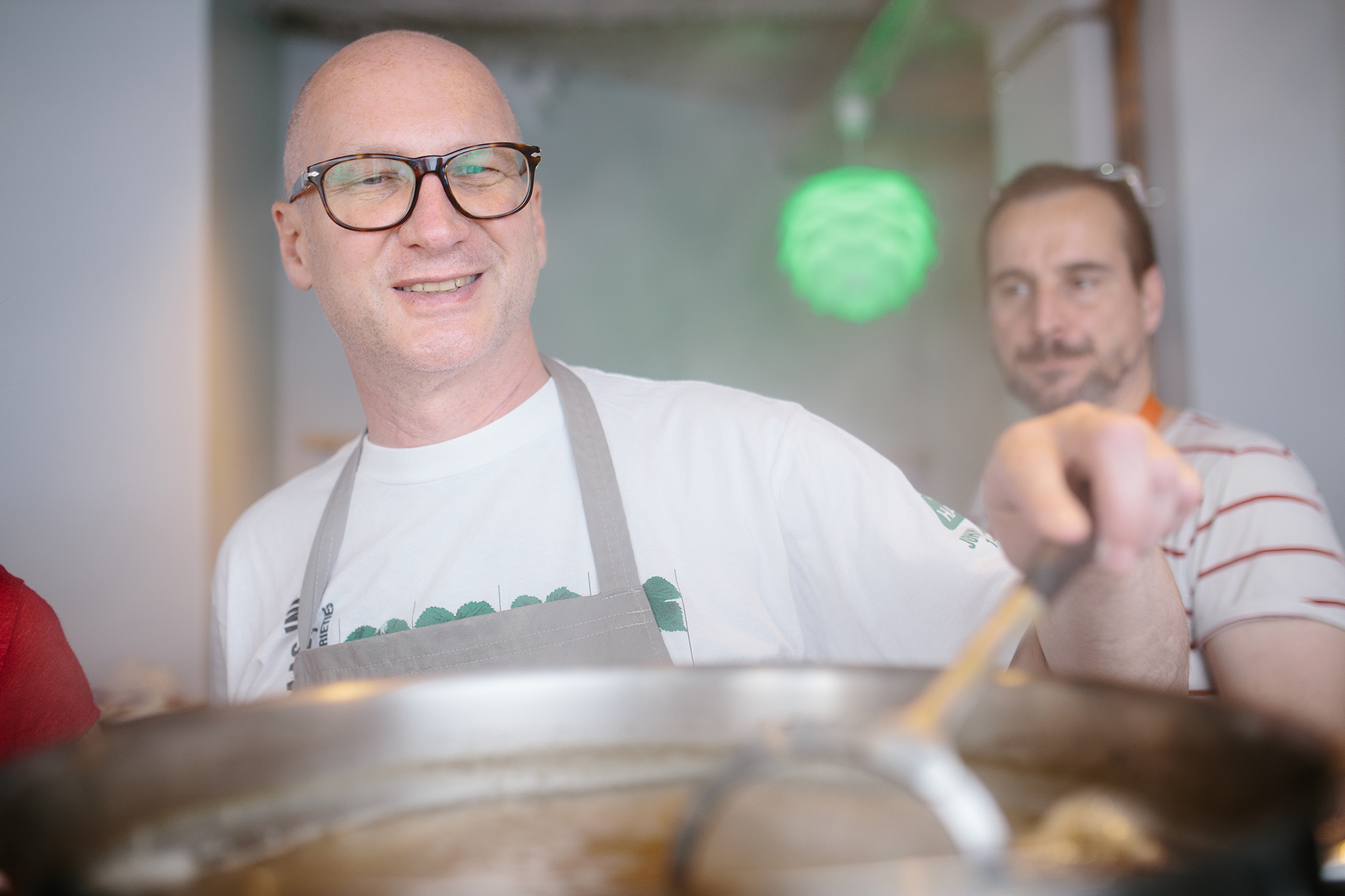
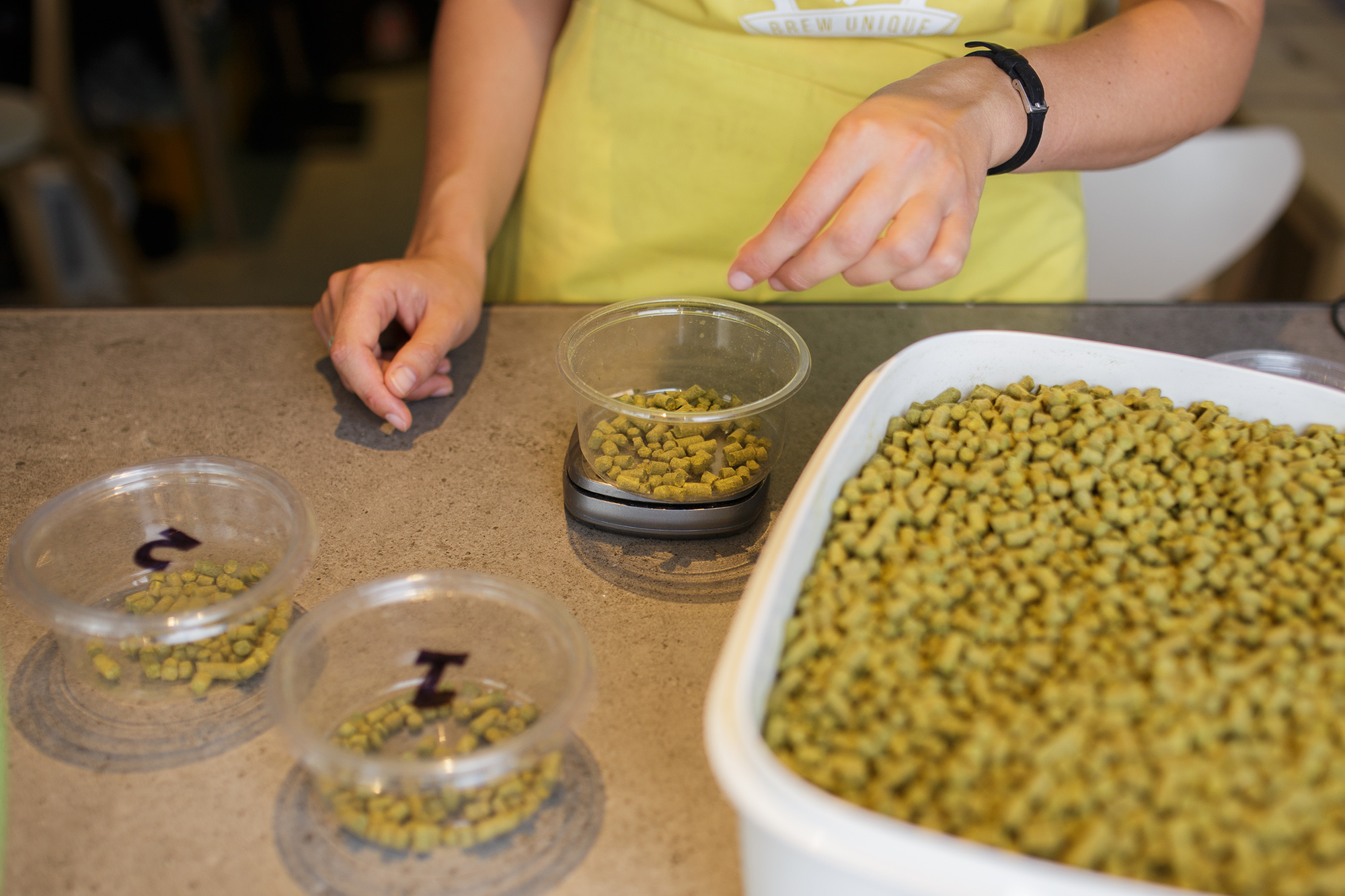
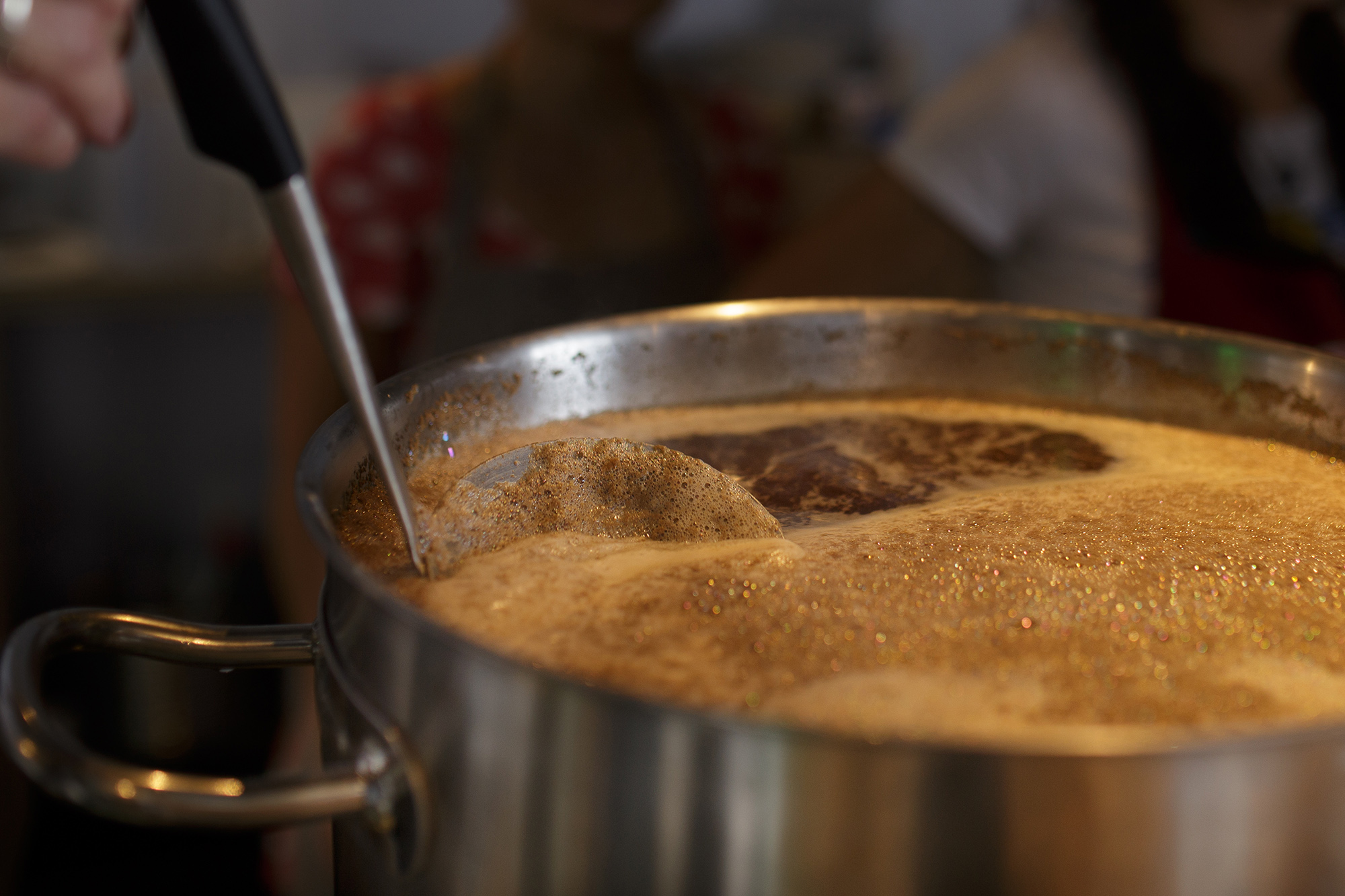
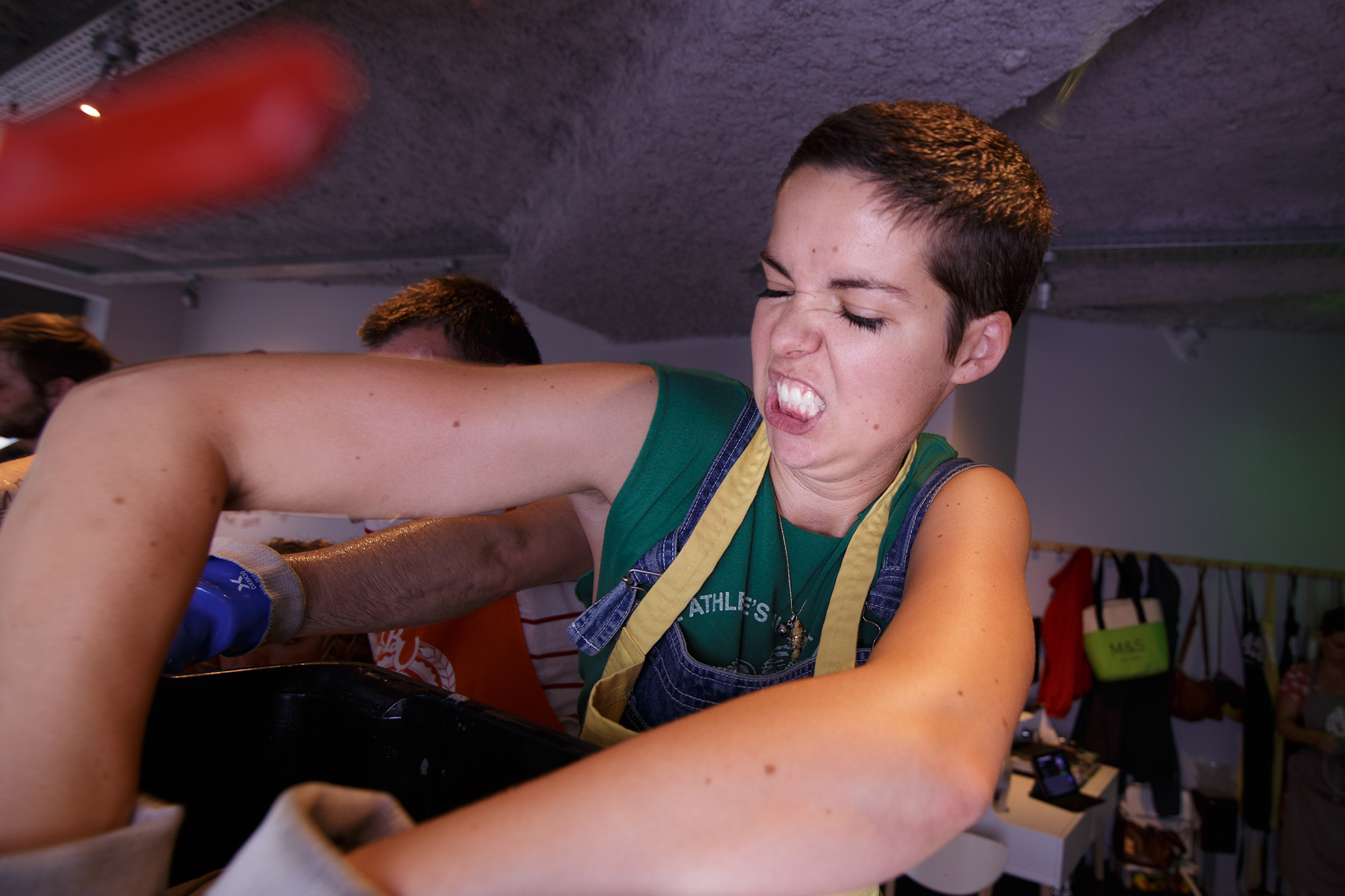
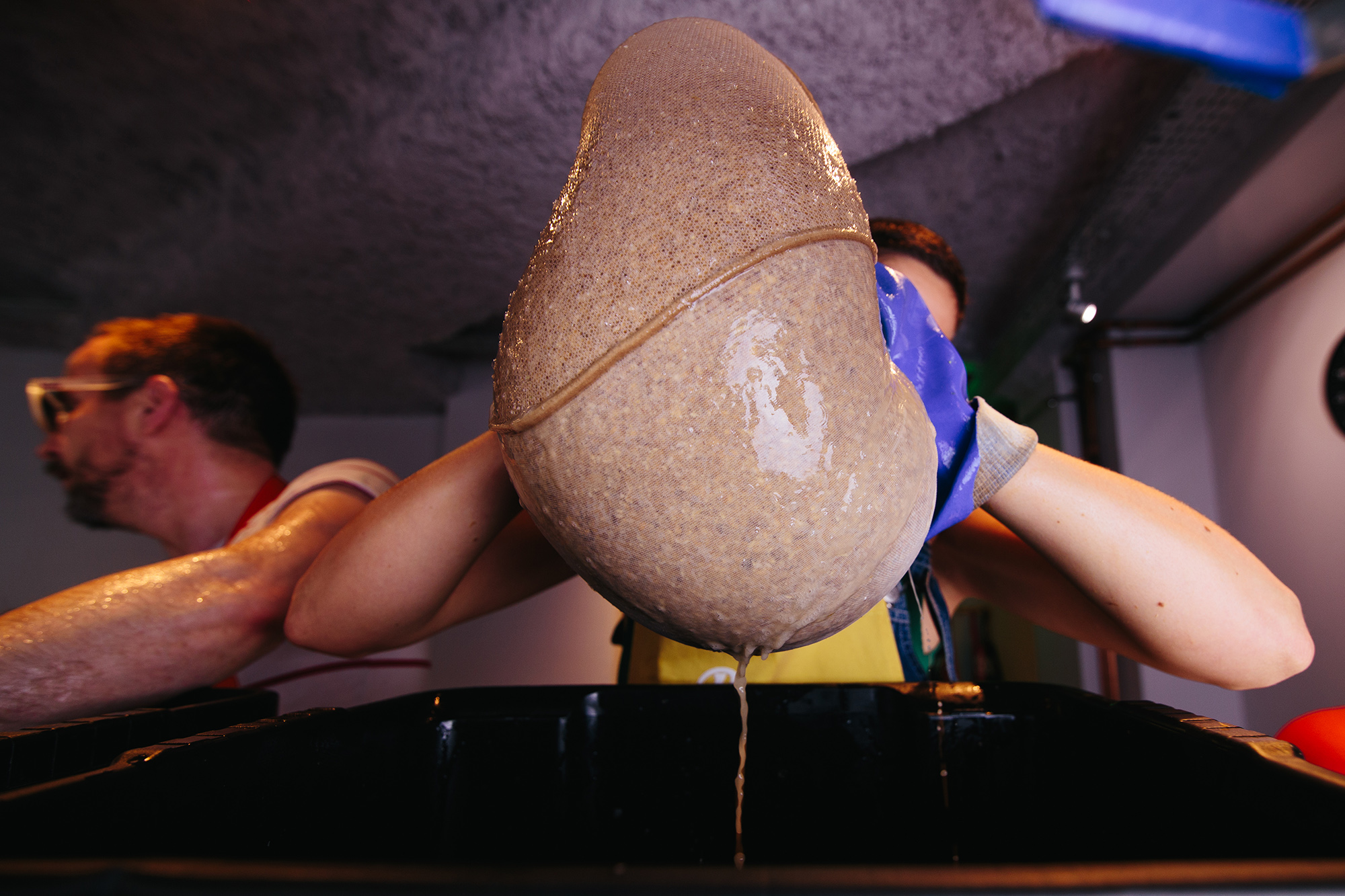


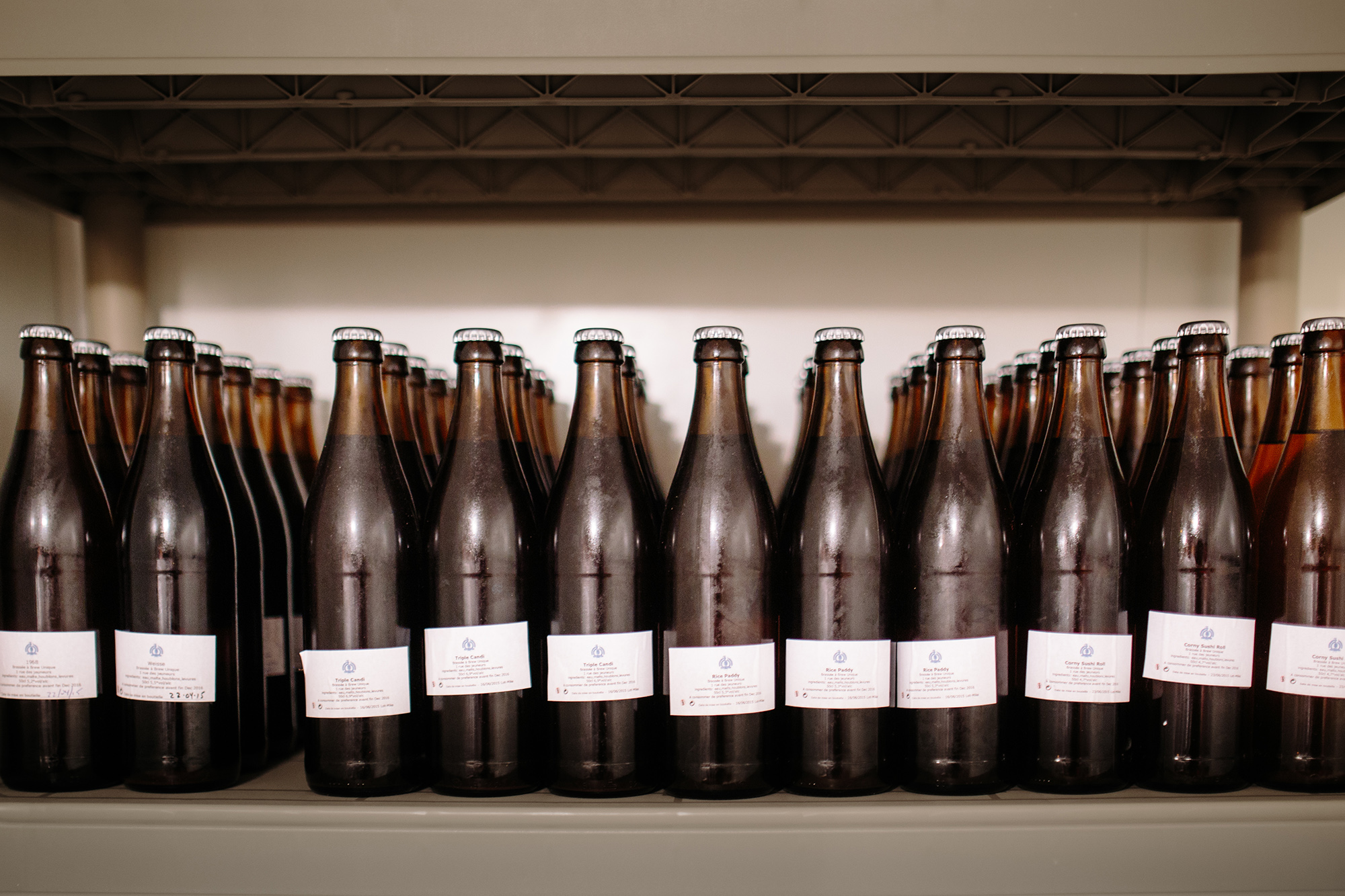
All photographs by Valentine Tchoukhonine. http://www.b-sublime.com/
Anna brewed with Brew Unique 1 Rue des Jeuneurs, 75002 Paris. Check them out on Facebook and online.
Sessions for a single brew (approximately 18L of beer) are 140€ on weekends, 126€ on weekdays.
Want to read more of my crazy adventures? Click here!
I also write about travel all over the world: click here to read more.











